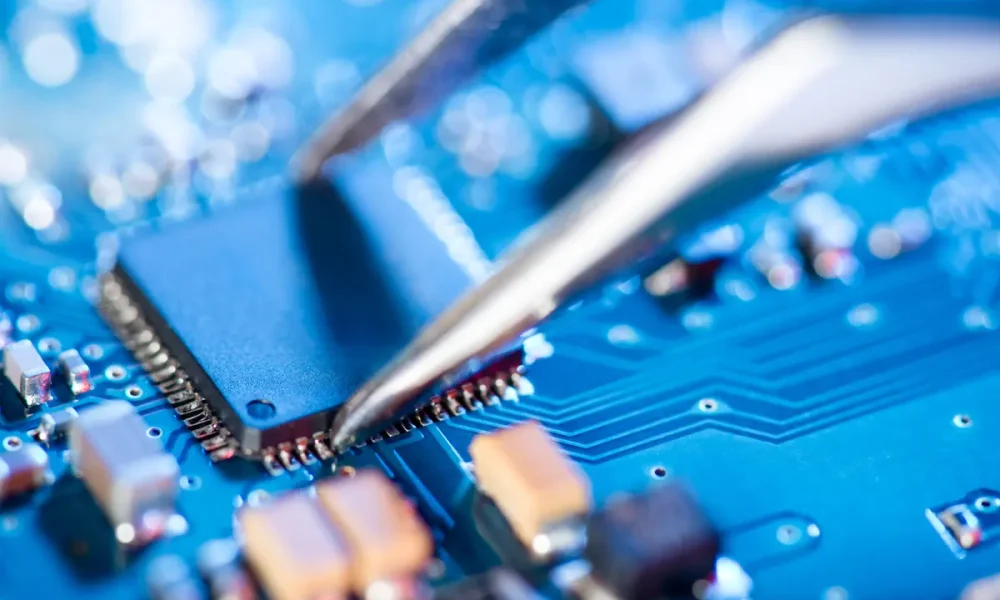What’s Causing a Worldwide Crisis in Electronic Components, and What Businesses Are Doing About It
We can all agree that semiconductors are an integral element of the high-tech world in which we now reside. Really, chips are what keep the world going. They are an essential part of any modern electronic gadget, from smartphones to cars to medical equipment to airplanes to smart appliances to wearables. Additionally, semiconductors find application in the military and similar settings. The annual production of chips is somewhere around a trillion, with roughly 128 chips produced for each person on Earth. The most cutting-edge processors are produced by Intel (USA), Samsung (South Korea), and TSMC (Taiwan).
Demand for these chips rose in part because of the global spread of the coronavirus. People’s shopping habits have shifted as a result, with more and more people investing in laptops, smartphones, tablets, etc., so they may stay entertained and productive while seated in the comfort of their own homes. This caused a worldwide shortage of chips, and it shows no signs of ending. There is a shortage of semiconductors at the manufacturing facilities. As a result, significant players in the technology and automotive industries are seeing sales declines as production is affected.
Two months have passed since I first wrote about the “Semiconductor Component Shortage that has Hit Automobile and Consumer Electronics Market,” and nothing has changed. We wanted to find out what went wrong and when the problem will be fixed, so we decided to investigate it today. What is being done to remedy it, and how long it is expected to take to restore the supply of electronic components, will also be discussed.
Why did the Global Chip Shortage happen and which sectors are affected the most
The chip shortage was unquestionably caused by the COVID-19 epidemic. Students were convinced to stay home from school and work because of the pandemic, and many adults were obliged to work from home. As a result, more investment was made in computing hardware, more time was spent playing video games, and more cloud resources were needed as enterprises rushed to implement remote work systems and cloud computing. People were afraid they wouldn’t be able to get their hands on enough of certain electronics, so they started stocking up. The result was havoc in the supply chain.
Companies in East Asia cranked up their production plants in response to rising demand for automobiles, which in turn boosted demand for semiconductors. Several major automakers, including Ford, Honda, Fiat Chrysler, and General Motors, have reported difficulty sourcing semiconductors, and have cautioned investors to expect production delays as a result.To add insult to injury, GM said the chip shortage may reduce profits by as much as $2 billion.
Companies in the electronics industry, including AMD, Qualcomm, Sony, and others, have also been affected by the chip scarcity that has plagued the automotive industry. The need for semiconductors shows no signs of slowing down, and electronic manufacturers are attempting to meet this demand. As cars get increasingly high-tech, they require more chips, contributing to the scarcity. The shortage of semiconductors is being driven by the automotive industry’s pursuit of ever-more-complex in-vehicle integrations.
![]()
What does Stats Indicate?
The coming months could see a shortfall of semiconductors as demand continues to rise steadily. The Semiconductor Industry Association predicted in December that global chip sales will increase by 8.4% in 2021, from a total of $433 billion in 2020, an increase of 5.1% during the year between 2019 and 2020.As the demand for electronics continues to rise, so does the scarcity of semiconductors. As a result, there is now a backlog at outsourced semiconductor manufacturing because of the change in business models.
The United States government imposed sanctions on SMIC, a leading chip manufacturer, preventing it from acquiring sophisticated manufacturing equipment from that country. As a result, the sanctions drove major chip customers to TSMC, causing a shortage. China has also ceased importing semiconductors from other countries. Both the United States and China are striving to become “The Tech Superpower,” however the United States has barred some Chinese companies’ access to US technologies due to allegations of intellectual property theft and human rights violations made against China. In addition, China is spending heavily on technological independence as a means of decreasing its reliance on foreign powers.
What’s the solution?
Poor global coordination and implementation of many US policies were major problems. That’s the first issue that requires fixing.The objective is for nations to band together to combat these threats.
Vice President Joe Biden has mandated a search for inefficiencies in the semiconductor supply chain to determine the extent to which the United States is dependent on foreign suppliers. The White House has taken action to address the semiconductor shortage and get the US supply chain back on track. The most pressing issue is not recovering from the supply chain breakdown, but rather preventing similar breakdowns in the future.
Executives think they can increase production to eliminate the deficit, but that won’t happen until the second half of 2021. New 5G telecom networks are required by smartphones with 5G-enabled chips, and the proliferation of IoT devices is expected to raise the need for semiconductors once the acute shortage problem is rectified.
The world’s largest chip manufacturers are working to boost output, but the incremental increases are unlikely to make up for the current shortages. This is a major setback for the manufacturing of everything from cars to washing machines to computers.Intel CEO Pat Gelsinger said, “The supply constraints, and ‘immense’ investment needed to meet demand mean that the chip shortages affecting the automobile industry and other sectors are likely to last two more years.”

What companies are doing to resolve the Issue?
This chip scarcity will be resolved in due time, and it is expected that there will be no significant difference between the two in the future. Major modifications should be implemented on a worldwide scale to prevent such events from happening again. Major chipmakers have gotten on their feet and are prepared to make significant adjustments.To accommodate increased demand, TSMC has announced a $100 billion investment over the next three years.Intel has announced intentions to invest $20 billion in its Arizona fabs, making it a new major supplier in the market by producing chips for other companies.
Vice President Joe Biden has requested $37 billion to implement his plan to dramatically increase domestic chip production.There will be four new plants built: two by Intel Corp in Arizona, one by TSMC there, and one by Samsung in Texas. China is trying to wean itself off Western technology by providing a variety of subsidies to its own chip industry.
Although significant efforts are being made to address the current chip shortage, industry leaders predict that the situation will last beyond 2019. Recent sources state that major chip-makers like TSMC, Nvidia, and Intel have all stated that the current chip scarcity will last until at least 2022.Let’s hope that the global community takes the necessary steps to fix the chip scarcity problem so that we don’t have to deal with this again in the future.








